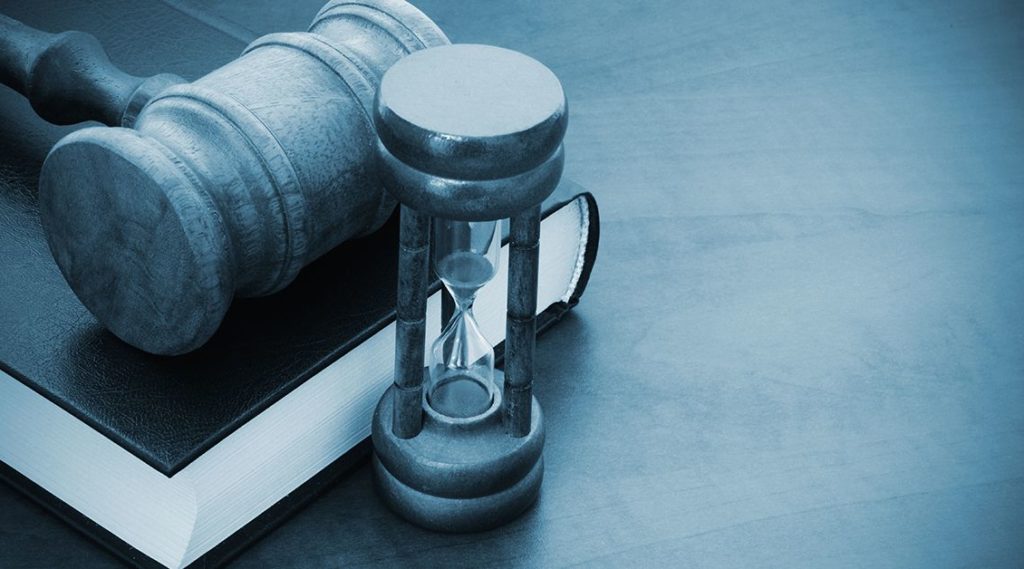
If you or someone you love has been injured in a car crash in California, it’s important to understand all of your options while you still have time to exercise them.
What Is a Statute of Limitations?
A statute of limitations is a narrow time period during which a person can take legal action.
You might be most familiar with the term “statute of limitations” from shows like “Law & Order” or the evening news, where it’s usually talked about in the context of criminal cases. Certainly, there are statutes of limitation in California criminal law.
In this article, however, we are focused on the statute of limitations for California civil law. Specifically, we will be looking at the time window for filing a personal injury claim after an auto accident in California.
There’s a lot to know. The statute of limitations can be a complicated subject, and we will look at just a few of the specifics below.
One thing you should know right away: courts will typically enforce a statute of limitations quite strictly, so the time limit really does matter. If the time window expires, it could you mean you lose your claim forever.
The Standard Statute of Limitations in California for Filing an Injury Claim
In California, auto accident victims have two years from the date of the accident that caused the injury to file a personal injury claim.
This same time limit applies to most other kinds of personal injury claims.
Please note that this is the general rule, which applies to most car accident cases. However, as we will see in the sections to follow, there are exceptions, and the two-year statute of limitations does not necessarily apply in every situation.
Exceptions to the Statute of Limitations in California for Filing an Injury Claim
As an attorney, making general statements about the standard of statute of limitations is difficult.
On the one hand, one or more exceptions (or special rules) might apply in your case, which could change the statute of limitations for your claim — sometimes modestly, sometimes significantly.
On the other hand, in most situations, an exception will not apply, meaning that failure to file within the two-year period will permanently prevent you from claiming compensation relating to that particular accident.
There are certain situations in which the “legal clock” is either “paused” or simply doesn’t begin to “run” until a later date. Examples of such situations in California may include:
- Delayed discovery — When the nature of your injuries cannot be reasonably discovered until well after the date of the accident
- Minority — If the victim was under the age of 18 at the time of the accident or, in some cases, if the defendant is a minority
- Service of process issues— If the defendant becomes incapacitated, imprisoned, out of state, or otherwise cannot be found before your claim must be filed
Alternatively, there are also situations where the statute of limitation is actually shorter than two years. One common example is:
- Claims against the government — In many cases, personal injury claims against the government (for example, if a state employee causes a car crash while driving on behalf of the state) must be filed within a very short window of time… often just six months.
These are only examples. They are not necessarily hard-and-fast rules, nor is this a complete list of exceptions or special rules that may apply in your case.
Never Make Assumptions
Calculating the statute of limitations in California for filing an injury claim is always a complex matter. You may have more or less time than you realize. Accordingly, a good rule of thumb is this:
- Never assume you have a lot of time to file your claim.
- Never assume you can no longer file your claim.
- Always talk to an experienced attorney to find out for sure.
Don’t Delay
Even if your accident just happened and you believe you have two years left to file a claim, it still isn’t a good idea to wait. Why?
Car accident claims take some time to prepare. The statute of limitations deadline refers to the formal filing of a lawsuit. But in many cases, a lawsuit isn’t filed until after a period of demand, investigation, and negotiation.
While it may be possible to rush to a courthouse and file a hasty claim at the last minute, you’re only hurting yourself by doing so.
The more time you and your counsel have to adequately strategize and prepare, the better poised your claim can be for success — and for optimal compensation.
Two years is already a small amount of time (many other states start with a “standard rule” of at least three years). Accordingly, you are encouraged to give yourself as much time as possible by talking to an attorney about your accident sooner than later.
Remember: time may not be on your side, but the California auto accident lawyers at The Law Offices of Mickey Fine can be.
The Law Offices of Mickey Fine Can Fight to Maximize Your Compensation
Don’t risk missing the time window for filing your claim. Don’t simply assume that you have correctly calculated the statute of limitations in California for filing an injury claim.
Instead, let car accident lawyers guide you throughout the claims process, fighting to maximize your compensation at every turn.
To learn more about your rights and options after a car crash in California, call our office and schedule a free, no-obligation case review.
We will never charge a fee for our services unless we get you money first. The initial consultation is absolutely free. Call (661) 333-3333 or contact us online right away.
